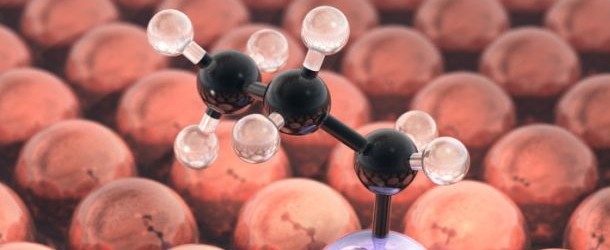Quantum Simulations Enable Prediction, Design of Single Atom Catalysts for Chemical Reactions

(HPC.Wire) Researchers at Tufts University, University College London (UCL), Cambridge University and University of California at Santa Barbara have demonstrated that a catalyst can indeed be an agent of change. They used quantum chemical simulations run on supercomputers to predict a new catalyst architecture as well as its interactions with certain chemicals, and demonstrated in practice its ability to produce propylene – currently in short supply – which is critically needed in the manufacture of plastics, fabrics and other chemicals. The improvements have potential for highly efficient, “greener” chemistry with a lower carbon footprint.
The demand for propylene is about 100 million metric tons per year (worth about $200 billion), and there is simply not enough available at this time to meet surging demand. Next to sulfuric acid and ethylene, its production involves the third largest conversion process in the chemical industry by scale. The most common method for producing propylene and ethylene is steam cracking, which has a yield limited to 85% and is one of the most energy intensive processes in the chemical industry. The traditional feedstocks for producing propylene are by-products from oil and gas operations, but the shift to shale gas has limited its production.
“We took a new approach to the problem by using first principles calculations run on supercomputers with our collaborators at University College London and Cambridge University, which enabled us to predict what the best catalyst would be for converting propane into propylene,” said Charles Sykes, the John Wade Professor in the Department of Chemistry at Tufts University and corresponding author of the study.
“Improvement of commonly used heterogeneous catalysts has mostly been a trial-and-error process,” said Michail Stamatakis, associate professor of chemical engineering at UCL and co-corresponding author of the study. “The single-atom catalysts allow us to calculate from first principles how molecules and atoms interact with each other at the catalytic surface, thereby predicting reaction outcomes. In this case, we predicted rhodium would be very effective at pulling hydrogens off molecules like methane and propane – a prediction that ran counter to common wisdom but nevertheless turned out to be incredibly successful when put into practice. We now have a new method for the rational design of catalysts.”
“This work further demonstrates the great potential of single-atom alloy catalysts for addressing inefficiencies in the catalyst industry, which in turn has very large economic and environmental payoffs,” said Sykes.



















